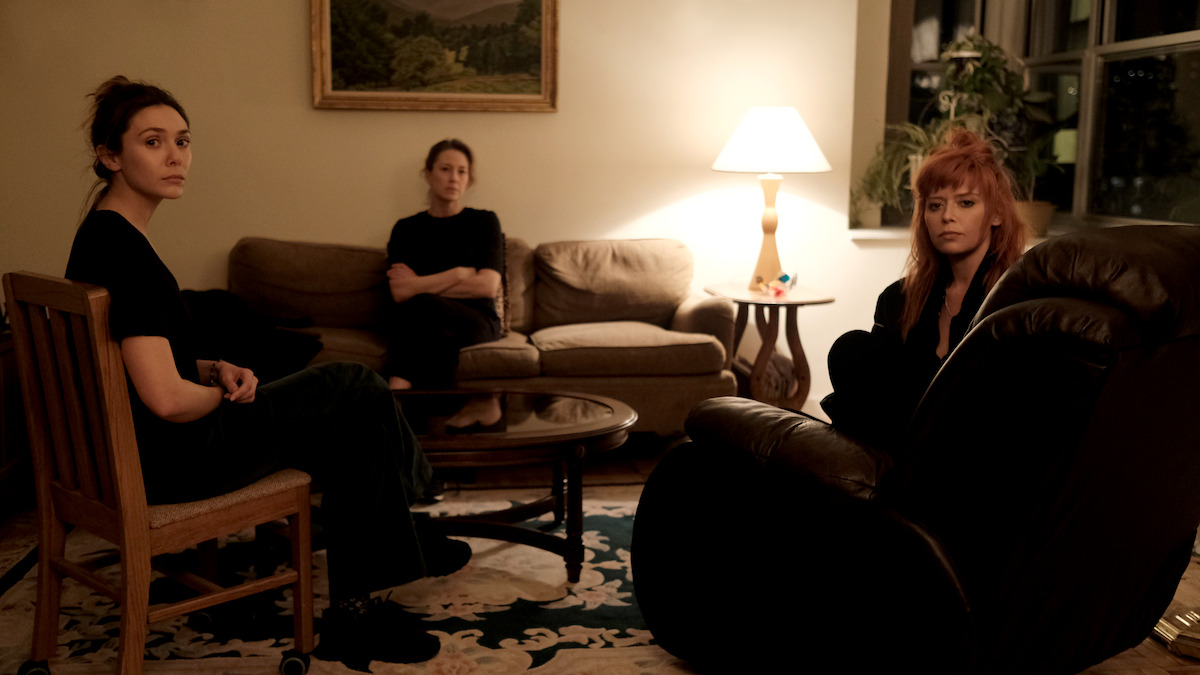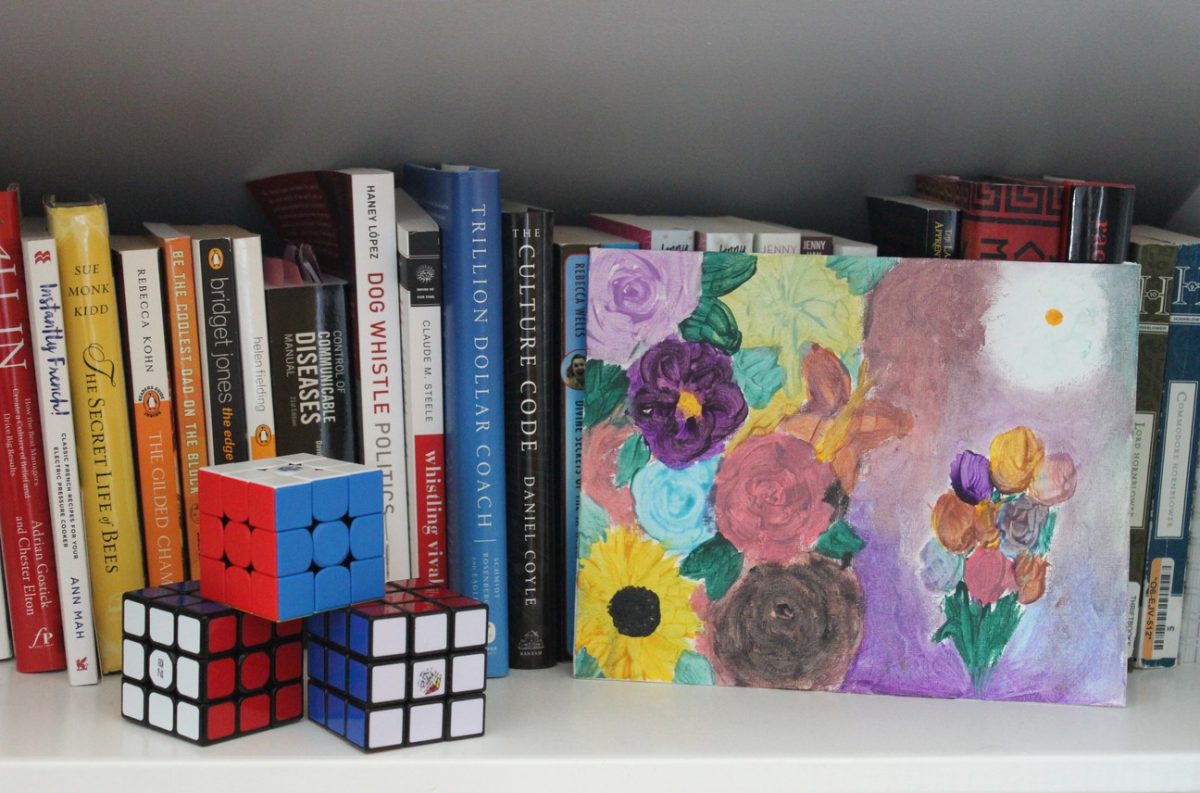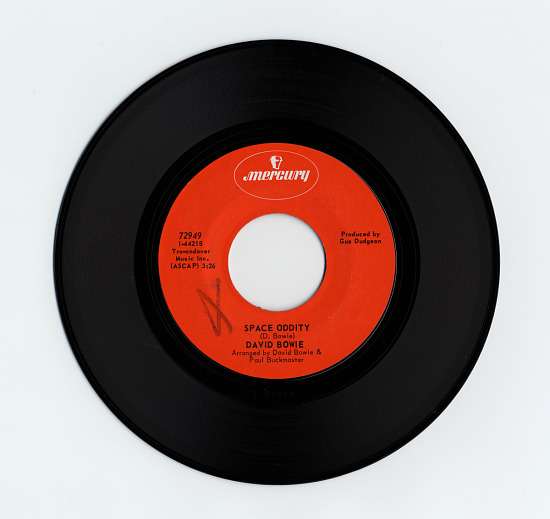“His Three Daughters” is a story that explores sibling dynamics. Directed and written by Azazel Jacobs, the film stars three acting veterans as three clashing daughters: Rachel, Christina and Katie. The middle child, Rachel (Natasha Lyonne), joined the dysfunctional family when Vincent, the father, remarried. The eldest, Katie (Carrie Coon), and the youngest, Christina (Elizabeth Olsen), have the same mother from Vincent’s first marriage.
Katie is a frazzled mom from Brooklyn, NYC, with a troublesome daughter. The pair often bicker and fight, leaving Katie frequently frustrated. Although Katie’s daughter is never seen on screen, Carrie Coon is able to portray her character’s struggles with motherhood and how it has taken a toll on her over the years.
Rachel lived with Vincent, the father, in a tiny NYC apartment, where she smoked a ton of marijuana and watched football with him. This pair is the closest out of all the daughter-father relationships in the movie. Rachel is unmarried and has no kids, and was presented as a loner and an unsuccessful sister. Her existence asks her sisters the question, “What is she doing with her life?”
Christina is perfectly put together. She seems healthy, successful and optimistic. She becomes the mediator and gently tries to repair the relationship between Rachel and Katie. This builds up throughout the film, showing her middle-child lifestyle.
Angel, Vincent’s hospice worker, checks in with the daughters over the tedious days they are united. He has to break the hard news to the daughters about Vincent’s rapidly declining health. At night, Mirabella, a local nurse, visits the home to check in with Vincent. The cycle of Angel in the morning and Mirabella at night, with fighting in the mix is endless. It’s only a matter of time until he passes.
Elizabeth Olsen’s performance as Christina is the center of this film. Watching her in this film made me annoyed. Her character is the ultimate try-hard and wants everything to be put together. Her life appears as if it were perfect, but as it progresses, the cracks begin to reveal. As the film progressed, I started to relate to her and feel for her. The entire time the three sisters are going through the process of taking care of their father, she is trying to keep her family somewhat afloat. She is the one mediator. It isn’t until Rachel and Katie have a fight that Christina finally snaps. Her seemingly perfect and neutral mask is then shattered. She lashes out at her sisters, shocking them with her outburst.
This scene was so significant to me because I felt the pain and pressure of trying to keep something together. I am a middle child, just like Olsen’s character, and I recognized the typical middle child characteristics: being a mediator, a leader, being severely independent, etc. It felt comforting to see that displayed so accurately and to be reassured that many middle children are in the same boat.
The use of one primary filming set was extremely impressive to me. Typically, films have many sets and destinations that the characters go to. Since the three sisters are all caring for their dying father, they are crammed in the same NYC apartment together. Yet, it isn’t boring, due to the incredible script. “His Three Daughters” is heavily dependent on the script, written by Azazel Jacobs.
Not only is there little change in the set, but there is also little music. Again, the script provides enough entertainment, keeping the audience hooked. The dialogue is more than enough.
The cinematography consists primarily of a no-big-light subtle, moody lighting. I love the feel of this because it sets a tone for the sisters to work through their difficulties, including the last scene the daughters have with their father.
Vincent is nearing death, and when the daughters carry their father to his favorite chair, he suddenly springs to life. Vincent rips out his IV and grabs a beer, as Katie, Rachel and Christina stand amazed. His brief conversation with his daughters answers what they are debating. Was Rachel rone of his own? He’s been waiting for them to get along. He reflects on what he hopes for his daughters and what he has regretted and been guilty of. He specifically apologizes to Christina for not being there to support her when her mother passed. Olsen’s face smiles and looks relieved as she hears what she’s been wanting to hear for years: that people see you and that they see the load you’ve been carrying.
After his personal reflection on his daughters, a sudden beeping picks up on his monitor. The daughters panic, knowing what’s coming next. Then he’s gone.
The medical professionals come, and it’s over fast. Silently, they are back in the living room. Each daughter takes a turn in their father’s chair, as he is gone and they feel the weight of his missed presence. Christina sings a lullaby, beginning the outro montage for the film.
The conclusion was a key part of the film. It helped resolve a lot of the tension that was present at the beginning of their story. Vincent’s monologue was absolutely beautiful because I felt I didn’t understand him since he didn’t show up until then. He helped answer their questions and debunk confusion they had thought about for years.
“His Three Daughters” is impeccable but for one small problem I can’t get past: it is a Netflix film. Netflix is a great platform, providing abundant opportunities for people to make a name for themselves. However, Netflix produces so much content that when a movie is released, it doesn’t feel unique. Often, it is swept under the rug instead of given its time in the spotlight. As someone who loves going to the movies, I would 100% rather see this film in theaters than at home. I could say that about every film. Yes, Netflix does release some of its movies in theaters, but not for very long. This is only a preference and doesn’t take away from the fact that “His Three Daughters” is a terrific film.
I see “His Three Daughters” as being a contender for a couple of Oscar nominations. Azazel Jacobs’ script is brilliant in my eyes and could be considered for Best Original Screenplay. Each acting performance of each of the three daughters is worthy of an Oscar nomination, particularly Olsen’s, as she skillfully displays a wide variety of emotions, from peacefulness to furiousness, from shame to happiness.
“His Three Daughters” is a candid, one-hundred-minute look into loss. It consists of engaging dialogue and the perfect casting of Natasha Lyonne, Carrie Coon and Elizabeth Olsen. Each gives their best performances to date, creating a simple, yet painful film. Netflix’s platform may cause it to be overlooked, but I see it as a legitimate contender for Oscar nominations.









